PHOTOS FROM FILMING AND PRESENTING 'PASSION' IN 2012
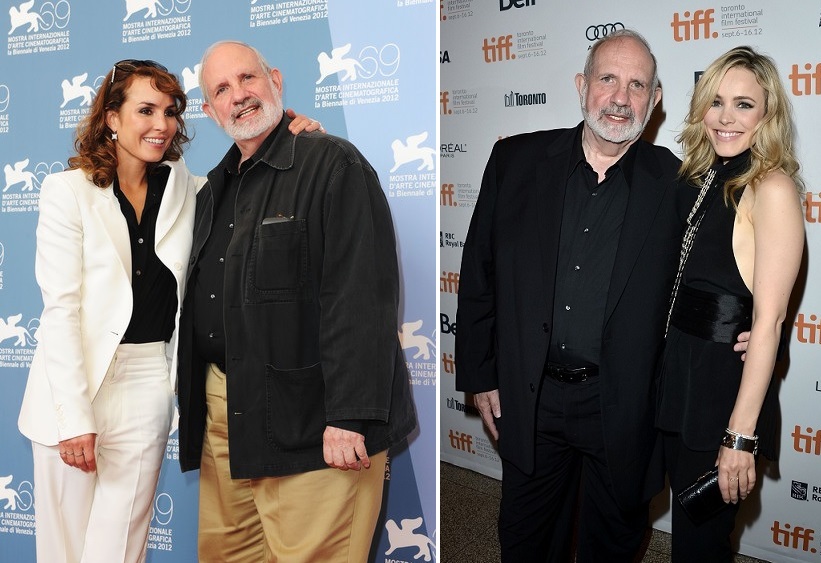
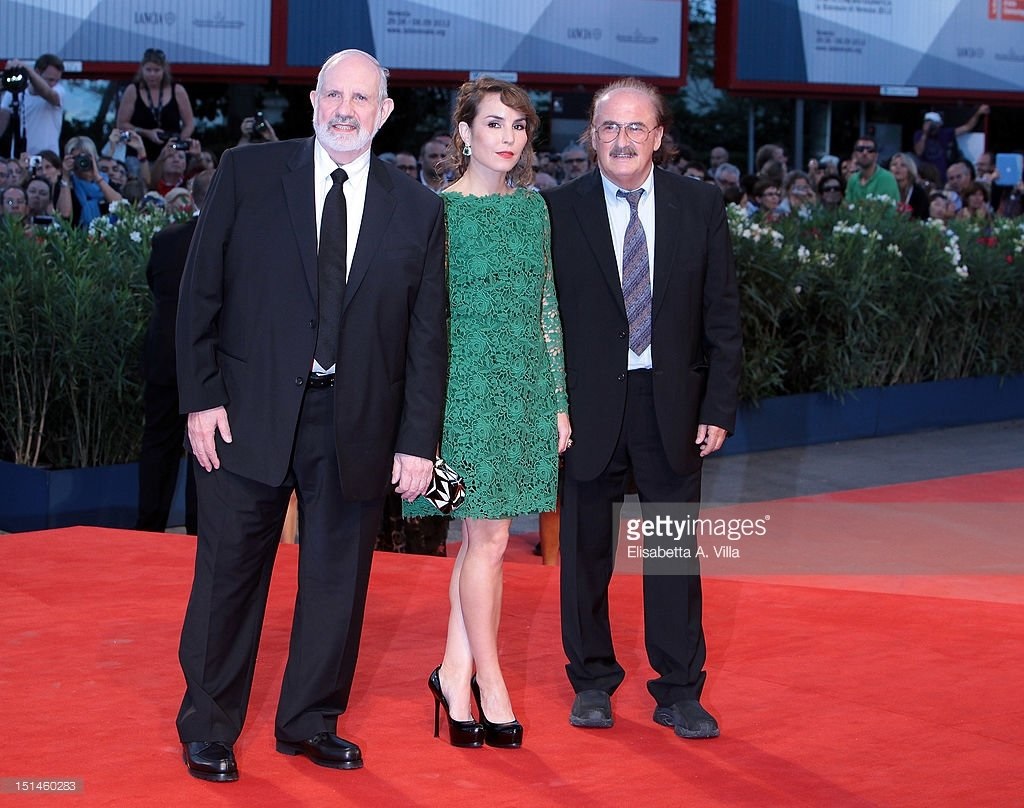


 Hello and welcome to the unofficial Brian De Palma website. Here is the latest news: |
|---|
E-mail
Geoffsongs@aol.com
-------------
Recent Headlines
a la Mod:
Listen to
Donaggio's full score
for Domino online
De Palma/Lehman
rapport at work
in Snakes
De Palma/Lehman
next novel is Terry
De Palma developing
Catch And Kill,
"a horror movie
based on real things
that have happened
in the news"
Supercut video
of De Palma's films
edited by Carl Rodrigue
Washington Post
review of Keesey book
-------------
Exclusive Passion
Interviews:
Brian De Palma
Karoline Herfurth
Leila Rozario
------------
------------
| « | September 2023 | » | ||||
| S | M | T | W | T | F | S |
| 1 | 2 | |||||
| 3 | 4 | 5 | 6 | 7 | 8 | 9 |
| 10 | 11 | 12 | 13 | 14 | 15 | 16 |
| 17 | 18 | 19 | 20 | 21 | 22 | 23 |
| 24 | 25 | 26 | 27 | 28 | 29 | 30 |
De Palma interviewed
in Paris 2002
De Palma discusses
The Black Dahlia 2006

Enthusiasms...
Alfred Hitchcock
The Master Of Suspense
Sergio Leone
and the Infield
Fly Rule
The Filmmaker Who
Came In From The Cold
Jim Emerson on
Greetings & Hi, Mom!
Scarface: Make Way
For The Bad Guy
Deborah Shelton
Official Web Site
Welcome to the
Offices of Death Records




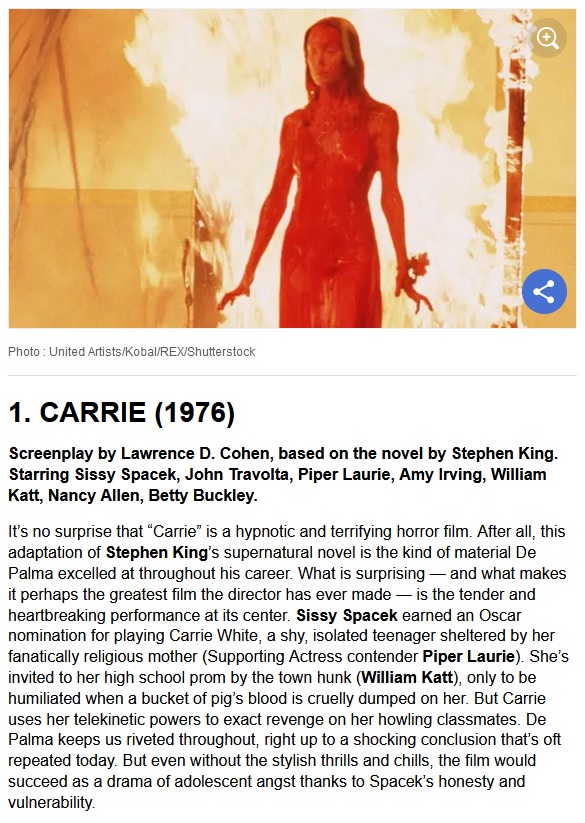
Although several of his films have either competed for or won Academy Awards (including “The Untouchables,” which brought Sean Connery a Best Supporting Actor trophy in 1987), De Palma has never personally been nominated for an Oscar. He has, however, competed at the Razzies a number of times, including for a few films (“Dressed to Kill,” “Scarface,” and “Body Double”) that have since been named as some of his best (the same, sadly, can’t be said for either “The Bonfire of the Vanities” or “Mission to Mars”).De Palma’s reputation has grown among cineastes who appreciate his visual flair, his flashes of humor, and his fascination with gore. He was recently the subject of the career-spanning documentary “De Palma” (2016), directed by Noah Baumbach and Jake Paltrow.
Tour our photo gallery of De Palma’s 20 greatest films, including a few gems for which he was undoubtedly snubbed at the Oscars.
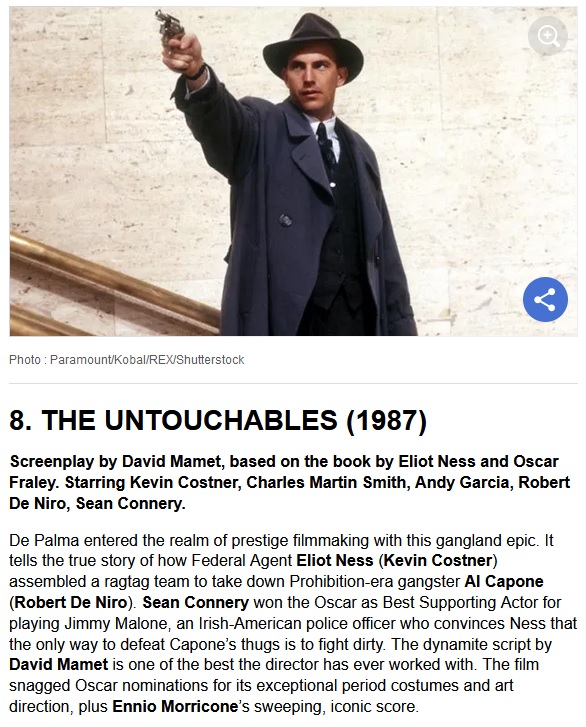
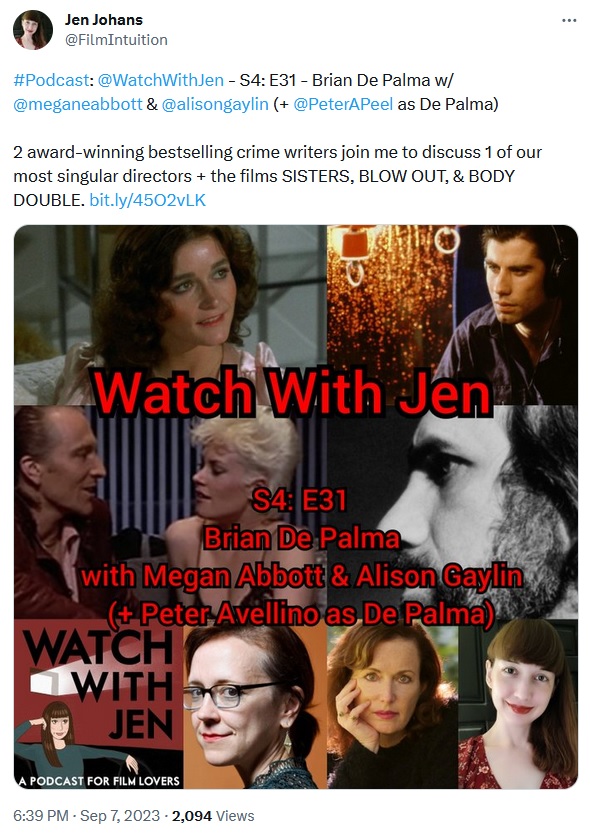
This week, I am honored to welcome a dynamic duo of acclaimed bestselling crime writers to the podcast & two women who've both won the Edgar and numerous other awards. Additionally, good friends who've also collaborated on the graphic novel NORMANDY GOLD, it's the wonderful partnership of Megan Abbott & Alison Gaylin. Author of such must-reads as DARE ME, THE TURNOUT, & GIVE ME YOUR HAND, Megan Abbott's latest novel BEWARE THE WOMAN is a modern gothic nightmare that you won't be able to put down. Alison Gaylin is the author of such gripping works as IF I DIE TONIGHT, NEVER LOOK BACK, & THE COLLECTIVE, & her latest title is a brand new Sunny Randall novel, ROBERT B. PARKER'S BAD INFLUENCE.Joining me to discuss the career of Brian De Palma, one of our most singular yet controversial filmmakers, in this breathlessly paced, contemplative & infectiously fun conversation, the two writers share their thoughts on the director's works, legacy, critics, popular sources of debate, & the films SISTERS, BLOW OUT, & BODY DOUBLE. As a fun bonus for listeners, similar to the way that I wove voice-over into an earlier fourth-season episode with Megan Abbott devoted to Paul Schrader, once again, I've recruited the vocal talents of a friend (today, in the form of past guest Peter Avellino) to read excerpts from past De Palma interviews I discovered & enjoyed during my research.
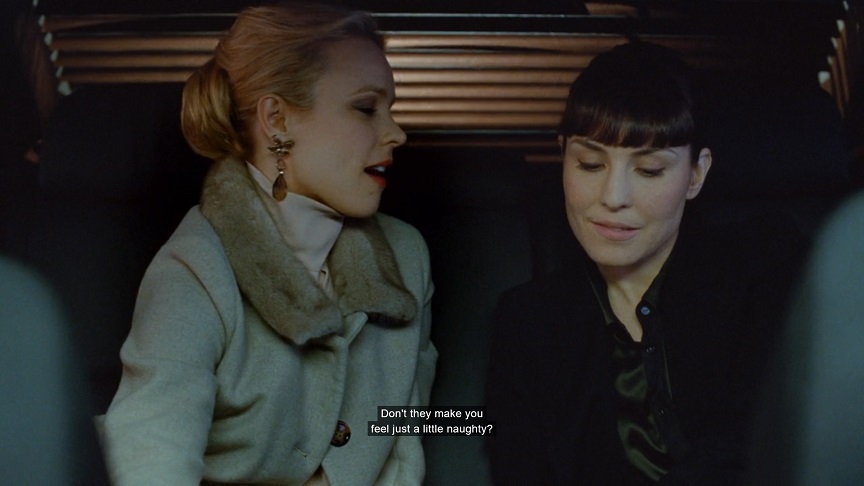
Brian De Palma’s Passion came to town last Saturday for a surprise weeklong run at the Music Box Theatre, and continues through the weekend as a midnight show. I caught up with the film the other night with an audience of 15 or 20 (the Music Box’s main auditorium hadn’t felt so cavernous since that midnight screening of Beyond the Valley of the Dolls a few months back), and I was surprised not to have seen more people in the room. The movie finds De Palma at his most playful (or grandiose, depending on your point of view) since Femme Fatale—it’s the sort of movie his fans usually eat right up. (I’m not even a De Palma fan, and I had loads of fun watching it.) As for what the movie’s “about,” allow me to recycle this passage from Jonathan Rosenbaum’s 2002 Reader essay on Femme Fatale, as it applies equally to Passion:[It’s] as if [De Palma] set out to combine every previous thriller he’d made in one hyperbolically frothy cocktail. So we get split-screen framing; bad girls; sweetie-pie male suckers; verbal and physical abuse; lots of blood… lyrically rendered catastrophes; noirish lighting schemes favoring venetian blinds; it-was-all-a-dream plot twists; scrambled and recomposed plot mosaics; obsessional repetitions of sound and image; pastiches of familiar musical pieces; nearly constant camera movements; and ceiling-height camera angles. Best of all, we often get several of these things simultaneously.
I’m not sure if De Palma himself considers Passion to be “about” anything. In the movie’s most impressive set piece, Noomi Rapace’s character watches a ballet production of Afternoon of a Faun while, on the other side of the split-screen, her business rival (Rachel McAdams) gets murdered in a characteristically (for De Palma) elaborate way. Is the filmmaker equating his filmmaking with more abstract arts like symphonic music or dance? (The title would seem to suggest as much.) De Palma has repeated certain motifs so many times that they no longer refer to anything besides themselves. Passion often seems to be after the sort of formal purity that Keats saw in his Grecian urn, with the qualities listed by Rosenbaum serving as De Palma’s clay.
Many of the compositions exhibit classical virtues of symmetry and opposition. De Palma regularly dresses the dark-haired Rapace in all-black and the blonde McAdams in white or red. Even before De Palma starts introducing preposterous coincidences and double crosses, the characters register as doppelgangers—Rapace’s flat underplaying seems intended to compliment McAdams’s exuberant hamminess (which is a hoot, by the way). Likewise, the women’s professional rivalry—a totally arbitrary power struggle within a multinational advertising firm—is underscored by intimations of sexual attraction. Once De Palma establishes these basic oppositions, he goes wild finding different ways to recombine—and re-double—them. When McAdams’s character confesses to having a twin sister, it feels inevitable.
Passion is a superficial film, but not an empty one. Amidst in the visual motifs, De Palma manages to touch on the following themes: corporate power, advertising, sexual desire, sadomasochistic relationships, and longing for love. The movie doesn’t offer a coherent statement about any of these subjects, though De Palma interweaves them with a musicality comparable to his visual style. There’s an odd poignancy to those moments where the themes related to dominance intersect with those related to vulnerability, suggesting that the pursuit of classical synthesis carries the risk of annihilation.
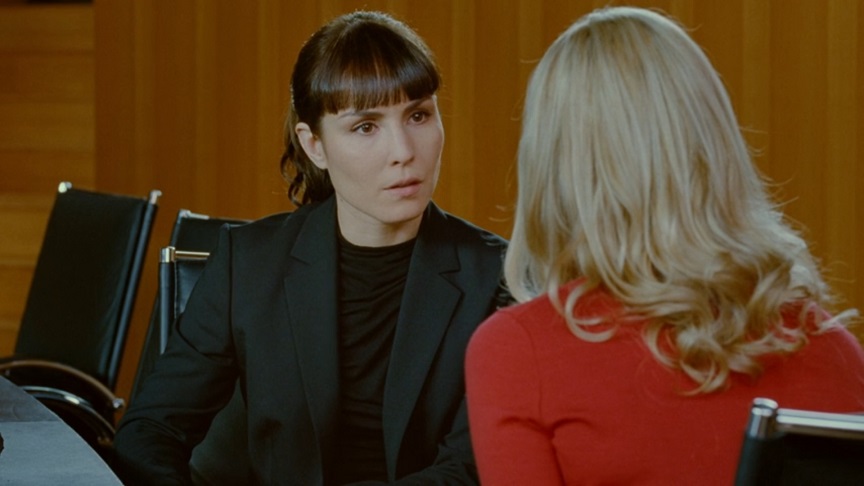
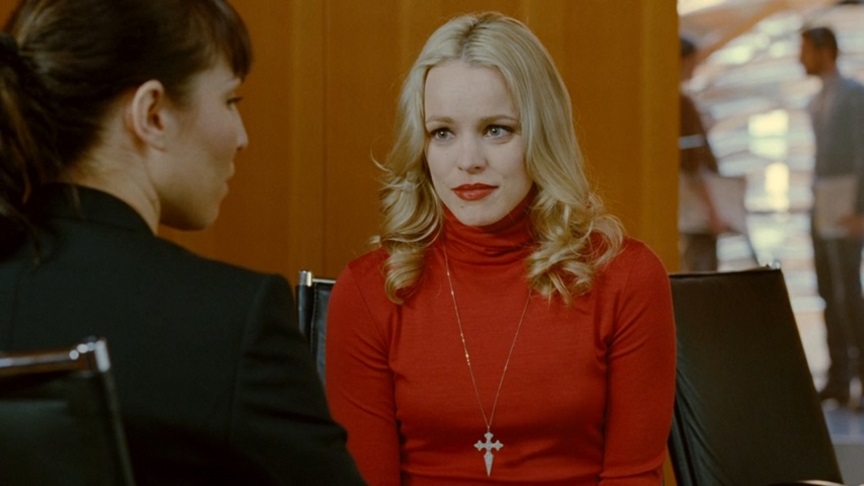
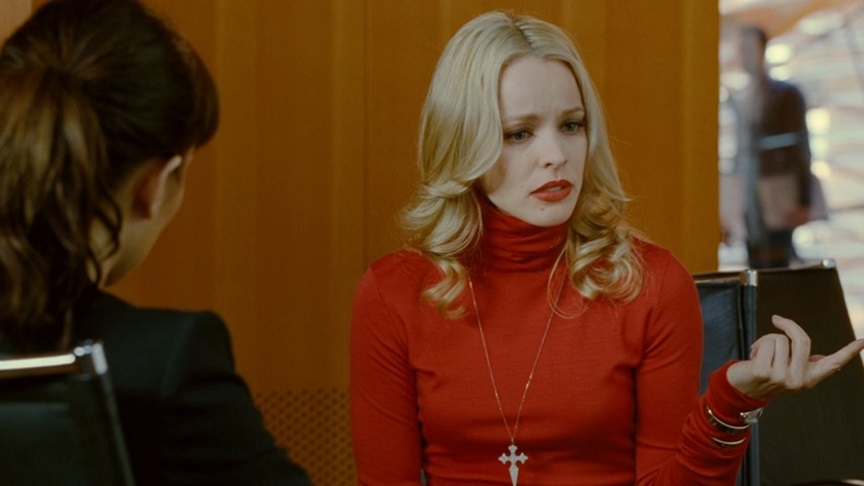
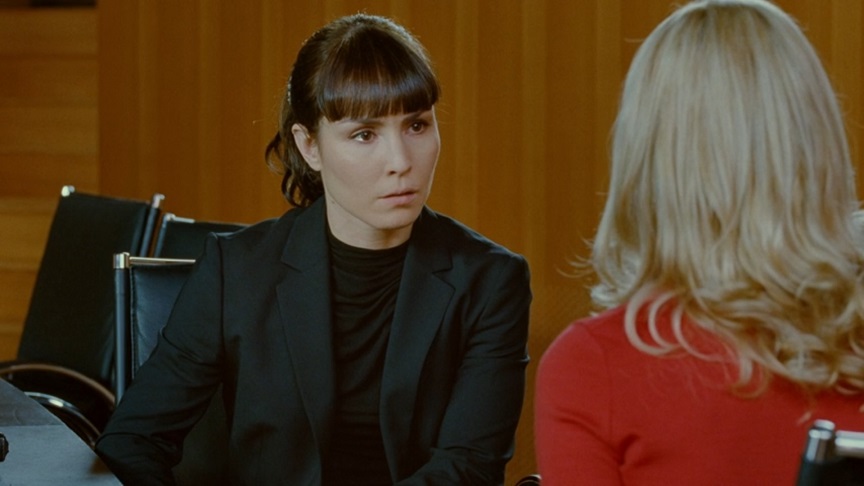
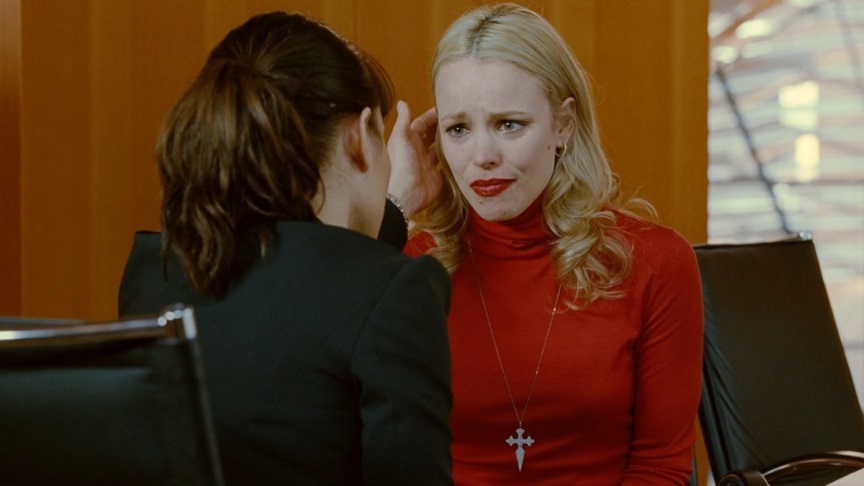
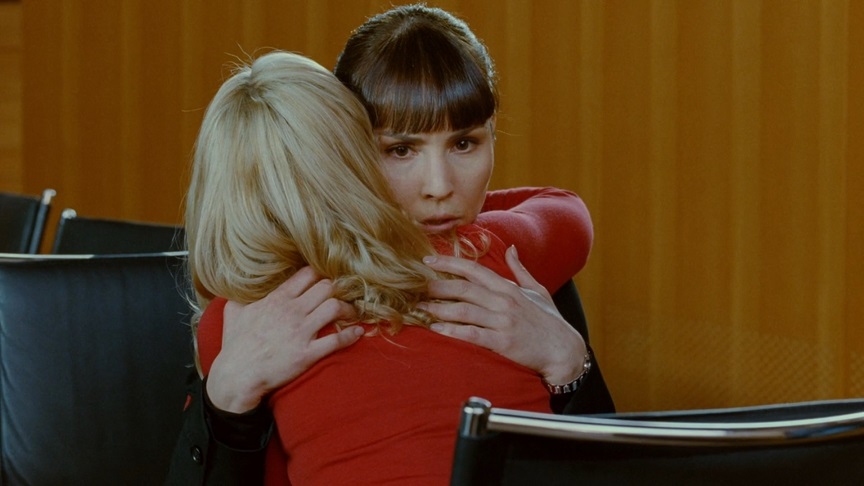
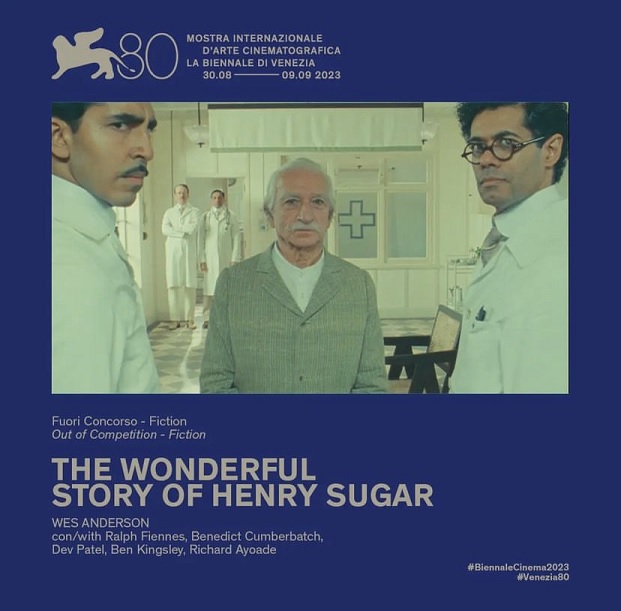
You’ve now exclusively adapted Roald Dahl for the screen. Is the way you visualize his writing unique, in that sense?Well, I think it probably just sort of happened. I wanted to do Fantastic Mr Fox because I wanted to do a stop motion animated film, and it's one I loved as a child and I just kind of mixed those two ideas together. Then I got to know the family. I had some conversations with them and I think Liccy [Felicity Dahl, Roald’s wife] probably said, “Is there another one you like?” So Henry Sugar was set aside for me. It’s not necessarily that I think Dahl is the most adaptable writer, although he might be one of the most adapted writers ever, maybe the most. I genuinely would rather take the inspiration of someone and combine it with something else that might be informed by what I’ve read that I can create my own version from.
Does this company work across all four of these short films?
Yes, but different mixtures. Poison is Benedict, Ben Kingsley, and Dev Patel. The Ratcatcher is Ralph, Rupert, and Richard. But they’re all mixtures of the same group.
Who did you show a film to first after you’ve finished?
My wife and daughter are coming in and out of the cutting room with some regularity. They have their own comments, but it tends not to be the finished thing. Juman, my wife, might say, “Okay tell me when you want me to see the whole thing.” But I have a few friends I rely on. I used to do a thing where I’d try to show a new film to directors I know who can give me [their] take. There was a period of time when I had a whole group. Actually some of them died; when we made Fantastic Mr. Fox we showed it to Mike Nichols and to Jonathan Demme.
Do you have others you rely on now instead?
I have Roman Coppola, my old friend. He’s one person I have to turn to for help. Then I have a little trio of directors: Noah Baumbach, Brian de Palma, and Jake Paltrow. The four of us have a little club that we do in New York. The three of them will watch something [I’ve made], often together, or if one of them is doing something we all see it. It’s a little like knowing someone else who’s a policeman or who's been in a war zone. You can describe it, but someone who’s been there, you connect with them in a different way.
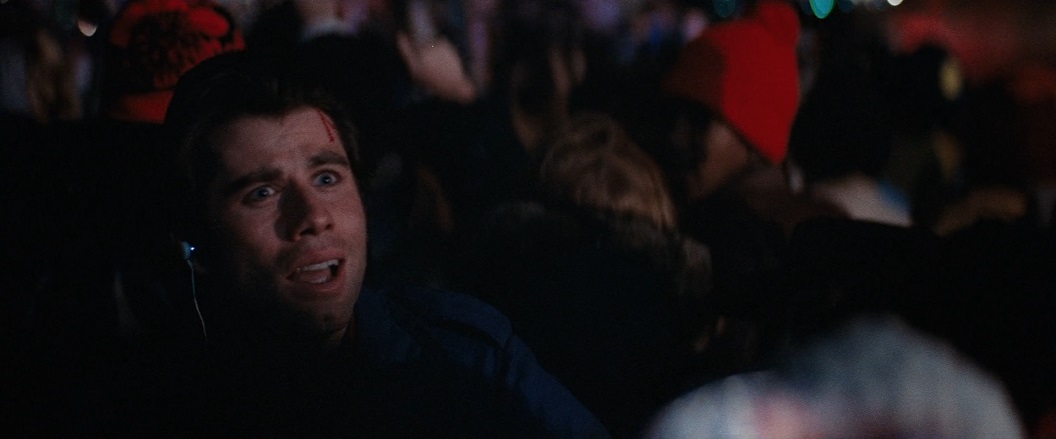
What's so fascinating about Blow Out is de Palma's ability to take what can be considered the rather bland and mundane science of sound and use it as a frame for a thoroughly absorbing and gripping tale of conspiracy, deceit, and dirty tricks. Jack is shown in the Philadelphia night, equipped with headphones and a narrow boom microphone that he moves slowly through the nearly-still evening air, trying to record varied ambient noises. He picks up the conversation of a distant couple who wonder why Jack is looking at them, followed by a staccato-sounding thump. De Palma pulls close focus on a bullfrog on the river's shore, replaced shortly thereafter by the familiar sound of a hooting owl. What would normally be a dull montage instead becomes an engrossing glimpse into how those background noises audiences hear when they're viewing their favorite films come to be.The serenity of the scene is shattered when the sound of screeching tires is heard in the distance. De Palma's camera focuses on Jack's recording equipment, with Jack's modulometer quickly ticking upward. The camera zooms in on the boom microphone itself, then moves to Jack's left headphone as a growing roar, something like a strong breeze, becomes louder. A sense of anxiousness pervades the moment, even though audiences are seeing only pieces of hardware. A sudden bang like a gunshot rings out, the modulometer springs to its highest level, and for the first time, de Palma's visuals move from the tightness of the technical fixtures to the view of a car careening out of control, crashing into a wooden bridge barrier and plunging into a river.
Jack manages to rescue the passenger Sally, but the driver, the governor of Pennsylvania and a presidential hopeful, perishes in the accident. It turns out Sally was the governor's paid companion for the evening, and the City Hall "guys in suits" do their best to keep that aspect of the incident quiet. The accident is blamed on a blown out tire on the governor's car, but Jack the expert sound technician swears he heard a bang before the blow out. Having recorded the sound of the entire crash sequence, Jack becomes obsessed with proving that someone deliberately shot the governor's car tire, causing it to hurdle into the water. Leave it to de Palma to turn a simple search for a sound effect into an intricate political white-knuckler.
Once the plot gets going, the concept of Jack's search for the perfect horror movie scream seems to disappear, but de Palma maintains focus on how sound technology is the key to cracking the case. A magazine publishes a series of shot-by-shot pictures of the crash that a photographer with nefarious intentions (Dennis Franz) has captured, which Jack then splices into film format and syncs up with his sound recording, proving his theory that the car's tire was shot out by someone hiding in the nearby brush (a subtle nod by de Palma to the famous Abraham Zapruder film of the JFK assassination). Meanwhile, a hired hit man named Burke (John Lithgow) is dispatched to take care of Sally, the woman who knows too much, before the real story gets out. Burke dupes Sally into believing he's a local Philadelphia news reporter who wants to interview her about the car accident and the proof that she and Jack have about the truth behind it. Jack is suspicious, however, so for extra protection, he wires Sally for sound before her meeting to ensure her safety and to make sure he has documentation of the conversation should the reporter be up to no good.
Immediately upon Burke introducing himself to Sally, what Jack picks up on Sally's mic convinces him she's in danger. As Burke and Sally move through a busy Philly commuter station, Jack tries to pinpoint their location by listening to the surrounding sounds — approaching train horns, subway turnstiles, the whistling of the metal tracks. After a harrowing eight-minute sequence, Jack is finally able to locate Sally based on the booming noises from a nearby fireworks display. Sally lets out a horrifying scream, but it's too late. She's murdered by Burke before Jack can reach her. Blow Out ends where it began, with Jack and his director in the screening room watching a cut of their slasher film. But now, the showering coed's silly howl has been replaced by Sally's final, tragic scream recorded by Jack. "Now that's a scream!" the overjoyed director says to Jack. A despondent Jack mutters, "It's a good scream. It's a good scream." So it was Nancy Allen's Sally who provided the best horror movie scream that, ironically, occurred in a non-horror film. And it shook moviegoers to their cores.
Blow Out's shocking, grim ending was too much for audiences to handle, and the film was a rare flop for de Palma, earning just $12 million. Despite its poor box office performance, critic Roger Ebert gave it four stars and commended de Palma for his focus on the scientific aspects of filmmaking. "This movie is inhabited by a real cinematic intelligence. The audience isn't condescended to," Ebert wrote. "In sequences like the one in which Travolta reconstructs a film and sound record of the accident, we're challenged and stimulated." And in his review of the film, Vincent Canby of the New York Times understood what it was all about, writing, "If you insist that the story be plausible, you'll miss the enjoyment of the film. You'll also miss the film's real point, which is that recording of the perfect scream." Blow Out offers the most unsettling of conclusions — that the ultimate horror movie scream can only be obtained from someone who is truly experiencing the ultimate horror.
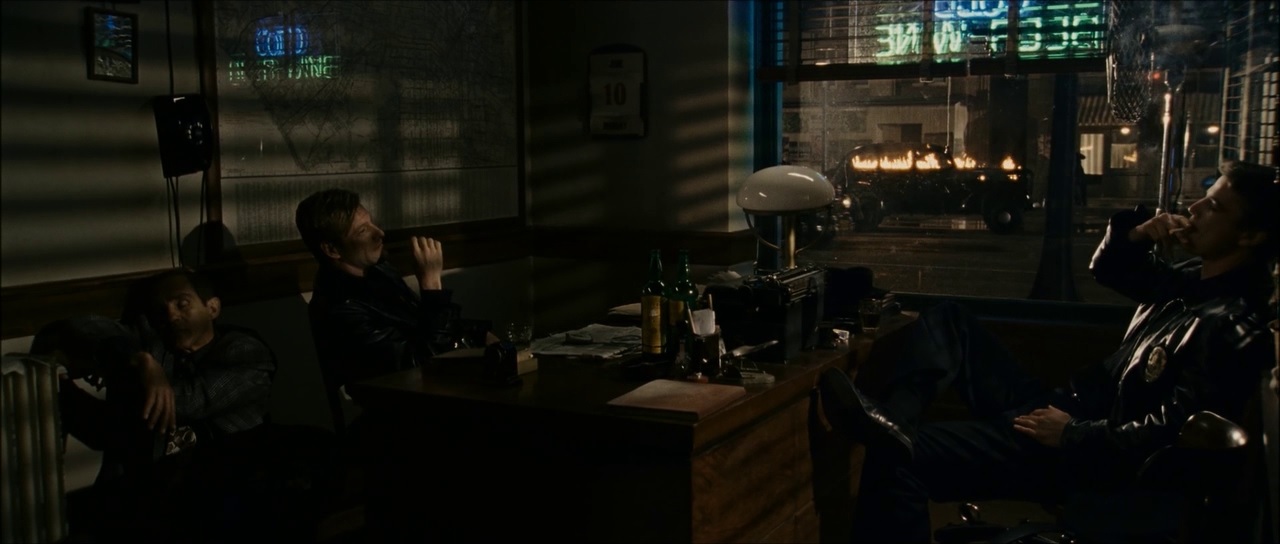
For years various directors had been flirting with an adaptation of “The Black Dahlia,” writer James Ellroy’s 1987 novel that presented a fictionalized account of the infamous murder of Elizabeth Short’s 1947 murder. Ellroy’s “L.A. Confidential” inspired the Oscar-nominated film noir epic of the same name (early versions of “The Black Dahlia” script included cameos by Russell Crowe and Guy Pearce, reprising their roles from “L.A. Confidential”) and the “Black Dahlia” was initially envisioned as a lengthy, expensive miniseries. The eventual film, directed by Brian De Palma, isn’t a home run, but it’s much better than most give it credit for. It’s ambitious, almost to a fault (especially when incorporating elements from real-life history like the Zoot Suit Riots), although it also contains some moments that only De Palma, one of his generation’s most talented filmmakers, could pull off, including an unforgettable camera move that accompanies the discovery of Short’s body. The performances, from Josh Hartnett, Arron Eckhart, Scarlett Johansson and many more, are knowing and arc – this movie is both a celebration of film noir as much as it is a deconstruction of it, which is asking a lot from an audience that probably just came to watch a true crime murder mystery. Those who are willing to go along for the ride will be richly rewarded. This is one of De Palma’s more underrated gems and one ripe for rediscovery. – Drew Taylor
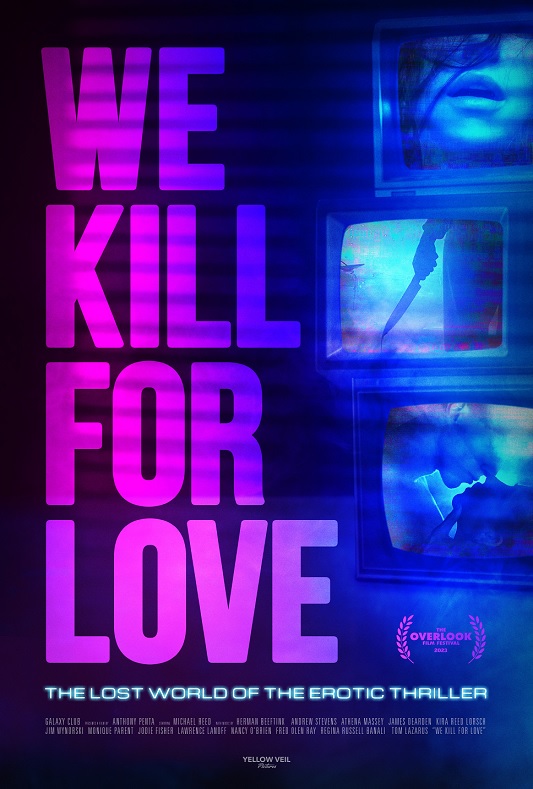
To explore its history, as Anthony Penta does here, is fraught with difficulties. Many films from the era are lost altogether; others survive only on decaying VHS tapes or the occasional laserdisc. In the latter days of the era they were piled high and sold cheap, so nobody thought of hanging onto them. Genre stars interviewed for the documentary reveal that even they find it difficult to remember individual films in the blur of similar material. Nevertheless, Penta does a decent job of tracking the progress of the genre and highlighting key titles whilst simultaneously exploring its origins.Erotic thrillers were very much a product of the emergence of home video. Before that, one watched what was on television, or went to a cinema, but there was little real choice. Making films was expensive so quality was important, making it difficult to experiment, especially with themes which were unlikely to attract support from arts funding bodies. Mainstream cinema offered romance; underground cinema offered pornography; and there was very little in between. Video, however, meant that suddenly there was a market for films which people could watch at home with no strangers present, and which, whilst delivering titillation, had enough story to escape the stigma of porn. Couples could watch them together. They could pretend they were doing so for the sake of the plot. Sometimes it was even true.
The roots of the genre, however, are deeper than that. Penta addresses the influence of film noir, with its dangerous, seductive femmes fatales and frequent murder plots. he also looks at the wider thriller genre, and particularly Hitchcock. (One cannot look at the architectural shots which open Paul Verhoeven’s Basic Instinct without thinking of Hitchcock.) This leads to reflection on Rebecca and the Gothic, with women in lacy nightgowns fleeing wealthy men with troubled pasts. Perhaps these origins go some way to explaining why erotic thrillers are such a peculiarly white phenomenon, with people of colour appearing only late in the game, and practically no mixed-race couples. The danger they involve is carefully packaged for middle class white American viewers and steers clear of the country’s deeper sexual anxieties.
The evolution of the genre would, inevitably, see new anxieties emerge. It provides an interesting mirror by way of which to reflect on US society during the early years of the AIDS epidemic. There’s a suggestion that it also addressed a developing crisis of masculinity, though the theories espoused here don’t go very deep, and there is some commentary on the development of feminism which is notable for its naivety, treating it as a unified school of thought. It is notable that the genre increasingly foregrounds women’s perspectives and portrays them as people who can be motivated by sexual desire, something which has become rarer in today’s cinema. This would be particularly plain in the Red Shoe Diaries series which emerged from the genre.
Penta positions Fatal Attraction as an ur-text for the genre, and takes the opportunity to discuss the issues with its ending, which was mangled by test audiences whose misogyny is perhaps easier for some viewers to appreciate from a distance. He also singles out Brian De Palma’s Dressed To Kill as a template for many films which followed it, and there are sufficient clips here for any viewer to recognise the repeated efforts to ape his camera angles. Then there’s 9 ½ Weeks, which gave the genre a shot in the arm at a stage when it was struggling. One might reflect that Kim Basinger is one of few women to have risen to stardom within this genre and gone on to build a successful career in more ‘respectable’ films.
The documentary rolls off the rails, though, when Penta veers into pretension. He creates a narrative with an actor playing “The Archivist,” a wholly unnecessary and distractingly bad device that disrupts the film’s momentum and seems especially bothersome given the film’s nearly three-hour running time. We see a man enter a room, discovering and watching old VHS tapes he’s studying, while a muted, haughty narration (provided by Penta) drones over him.“The Archivist” is supposedly a chronicler of erotic thrillers, but his presence is a purposeless extravagance whose subject matter is drenched in excess all its own. It’s an unwelcome flourish, and Penta’s accompanying narration is a self-aggrandizing excuse to attract attention to his pointless, flowery prose. Sure, it lovingly describes a genre whose main selling points are breasts and betrayal, but it’s maddeningly repetitive and smacks of self-importance. At one point, Penta repeats the phrase “Danger. Romance. Seduction” four times, each slower than the last. It’s meant to punctuate the notions but it’s a useless abstraction that elicits a larger sigh with each repetition.
Then we get to the presentation of the analysis itself, compiled from experts who speak insightfully and with authority. And while interviewees are discussing films like Double Indemnity, Rear Window and Vertigo in comparison to genre classics like Brian De Palma’s Dressed to Kill, Adrian Lyne’s Fatal Attraction and Paul Verhoeven’s Basic Instinct, we see clips of films like In the Heat of Passion, Lake Consequence and Sins of Desire. No offense to those films, but their incorporation of themes from those earlier films is where comparisons to such classics end; they are not as apples-to-apples as their more well-known and -respected cousins.
Penta also raises and drops some threads, including a timeline outlining the number of erotic thrillers made year to year. That timeline stops at 1994, which is presumably the peak, but is dropped and never returns.
The genesis of it all was Brian de Palma’s Dressed to Kill, which established just about all of the genre’s tropes and motifs. Lawrence Kasdan’s Body Heat was its Citizen Kane and Basic Instinct and Fatal Attraction were its Star Wars-sized hits. In between, there were a lot of cheaper films, promising, but not necessarily delivering naughty thrills, for customers of independent video stores and late-night cable TV.The phenomenon was well underway during the mid-to-late-1980s, but it maybe reached its peak in the early 1990s. Andrew Stevens is a major reason why. He leveraged his notoriety as an actor (from films like The Fury and Death Hunt) to get his screenplay produced. He also starred in Night Eyes, which is definitely one of the documentary’s touchstone films. To Stevens’ credit, he is a good interview subject, who can discuss his career with self-aware perspective and a sense of humor.
Occasionally, there is some horror crossover in We Kill for Love, mainly thanks to Fred Olen Rey. Penta and his academics (whose political commentary on the 1980s is often dubious) also convincingly identify straight-to-video erotic thrillers as the disreputable offspring of film noir and hardboiled pulp on the male side and gothic romance on female side. (However, class envy played little role in the genre’s success. The characters’ luxurious lifestyles were just a further dimension of its voyeurism.)
Indeed, voyeurism often factored very directly in the storylines, but they were not X-rated. They were “naughty” rather than “dirty” movies. Yet, many of the actresses who frequently appeared in these films have had to push back when they were unfairly labeled “porn stars,” like Amy Lindsay (whose credits also include guest shots on Star Trek: Voyager, Silk Stockings, and Pacific Blue), who explains what it was like to be smeared with the “p” word when she appeared as an average voter in a commercial for Ted Cruz. Give Penta credit for covering this incident fairly.
The erotic thriller was a staple in video stores in the 1990’s. The shelves of every Blockbuster Video store were filled with films like Night Eyes (1990) and Poison Ivy (1992). The genre owes its existence to a handful of classic thrillers like Brian De Palma’s Dressed to Kill (1980), the Michael Douglas-Glenn Close smash hit Fatal Attraction (1987) and the sexy crime procedural Basic Instinct (1992) starring Douglas and Sharon Stone.The new documentary We Kill for Love chronicles the rise of the erotic thriller during the birth of the home video era and its near-total disappearance in our age of streaming. Writer-director Anthony Penta tracked down hundreds of titles (many of which only exist on VHS) to complete his research into the subject. Penta has also compiled extensive on-camera interviews with the major stars of the era including Andrew Stevens, Kira Reed, Monique Parent, Amy Lindsay, Athena Massey, and Jodie Fisher.
The film examines how, despite the titillation and nudity, the erotic thrillers of this era were about female empowerment. In these films, women refused to be seen only as sex objects and took ownership of their lives. They weren’t waiting to be rescued by a man. They could face their enemies alone if they had to.
We Kill for Love is being distributed by Yellow Veil Pictures so fans should be guaranteed home video access to this excellent film about films. I’ll be buying the Bluray not simply to rewatch the documentary, but so I will always have access to the bibliography of films and written articles listed in the film’s final credits. Don’t be put off by its 163-minute runtime. The documentary explores so many facets of the erotic thriller genre that it never lags. It’s not simply an interesting history of a sub-genre of cinema. It’s also a fascinating sociological and cultural history of 1990’s America.